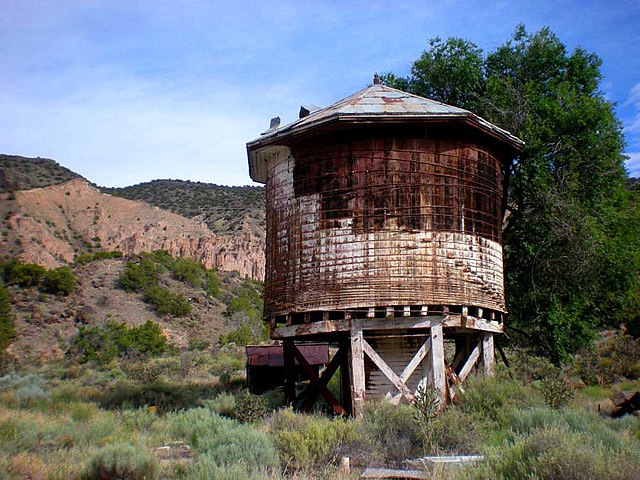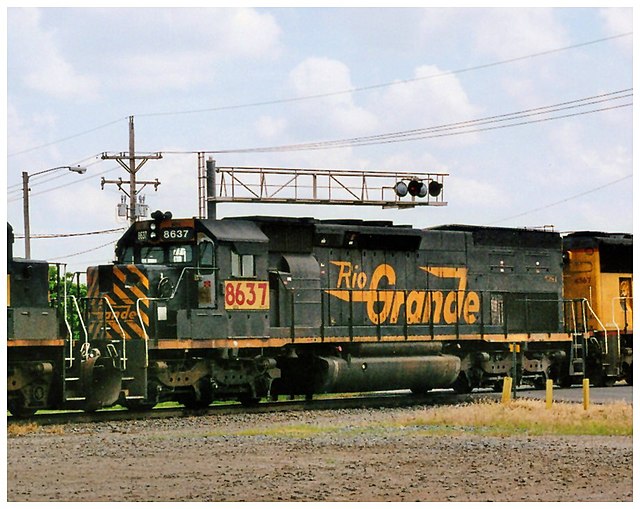The Chili Line, officially known as the Santa Fe Branch, was a 3 ft narrow-gauge branch of the Denver and Rio Grande Western Railroad (D&RGW). It ran 125.6 miles (202.1 km) from Antonito, Colorado, to Santa Fe, New Mexico. The Denver and Rio Grande Railway (D&RG) began construction of the line in 1880 and completed the line from Antonito to Española, New Mexico, but could not build any further because of an agreement with the Atchison, Topeka and Santa Fe Railroad (AT&SF). The Texas, Santa Fe and Northern Railroad was incorporated to complete the line, and the line between Española and Santa Fe opened in 1886 and was transferred to the Denver and Rio Grande shortly thereafter. The D&RGW closed the Chili Line in 1941 because of competition from road transportation, and the line was abandoned shortly thereafter.
Old water tower at the Embudo Station
Denver and Rio Grande Western Railroad
The Denver and Rio Grande Western Railroad, often shortened to Rio Grande, D&RG or D&RGW, formerly the Denver & Rio Grande Railroad, was an American Class I railroad company. The railroad started as a 3 ft narrow-gauge line running south from Denver, Colorado, in 1870. It served mainly as a transcontinental bridge line between Denver and Salt Lake City, Utah. The Rio Grande was also a major origin of coal and mineral traffic.
During the late 1800s the D&RG made extensive use of consolidations (engines with a 2-8-0 wheel arrangement). This drawing, of an unusual wheel arrangement, was titled "Standard Consolidation Engine," 1881.
Over the course of decades, D&RG consolidations were subjected to various modifications. In the 20th century, diamond stacks gave way to straight stacks, box headlights were replaced with round ones, decorative trim disappeared from the domes, and wooden pilots (cowcatchers) were replaced with steel ones.
D&RGW 5384, patch-renumbered into UP 8637
D&RGW passenger train at the Colorado Railroad Museum. The F9 A&B diesel electric locomotives (1955) were used for the California Zephyrs and Rio Grande Zephyrs.





